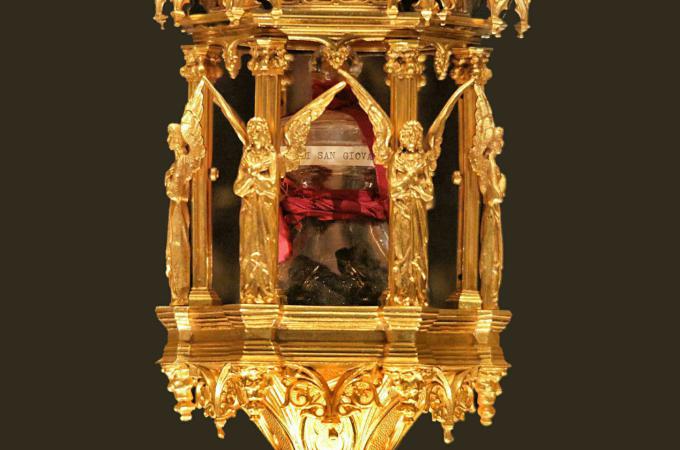Disposing of relics
Q. I received in the mail an unsolicited request for donations from a Catholic charitable organization. Included in the mailing was a third-class relic. I do not need to have a third-class relic of an unfamiliar saint in my house.
I suppose that I should have mailed it back to the charity immediately, but I no longer have that information. I have not discussed this with my parish, but I doubt that they want to collect unsolicited third-class relics any more than I do. How do I dispose of this item respectfully? (Roanoke, Virginia)
A. Veneration of relics of the saints has a long history in the church. The Acts of the Apostles (19:11-12) notes that "so extraordinary were the mighty deeds God accomplished at the hands of Paul that when face cloths or aprons that touched his skin were applied to the sick, their diseases left them and the evil spirits came out of them."
There are three classes of relics. First class are parts of a saint's body; second class would be a piece of the saint's clothing or something used by the saint; and third class is an object that has been touched to a first-class relic.
Relics of the saints should be treated with the same respect that Canon 1171 awards to other blessed or sacred objects: They should be treated reverently, and the basic rule for the disposition has been to burn or to bury them. The website of the Diocese of Superior, Wisconsin, clarifies that "it is not a sin to throw away blessed items, but out of proper respect, one should dispose of them in this way."
I agree with you that an organization should not mail out relics unsolicited; to do so risks casual or irreverent treatment, and it doesn't seem fair to burden the recipient with the obligation to dispose of them properly.
Q. Here in Columbus, the solemnity of Mary (Jan. 1) is a holy day of obligation. I have sisters, though, who live in Charlotte, North Carolina, and in Los Angeles, and Jan. 1 is not a holy day of obligation in either place. Why would it not be the same everywhere?
It seems this is such a serious matter (a mortal sin if missed) that it should not be left up to local bishops to decide. Certainly, I would think, it ought to be the same in all parts of the U.S., if not everywhere in the world. (Columbus, Ohio)
A. Jan. 1 is a holy day of obligation across the continental United States. In 1991, the U.S. Conference of Bishops decreed that there would be six such days in this country, including the solemnity of Mary the Mother of God.
To my knowledge, the only place where this differs is in the state of Hawaii; with an indult (permission) from the Vatican, the Diocese of Honolulu determined in 1992 that there would be only two days of obligation there: Dec. 8 (the Immaculate Conception) and Dec. 25. That was done to bring Hawaii into conformity with the other islands in the South Pacific.
With the solemnity of Mary the Mother of God (Jan. 1), the solemnity of the Assumption (Aug. 15) or the solemnity of All Saints (Nov. 1), the obligation of Mass attendance is lifted when the date occurs on a Saturday or a Monday.
(I suspect that what prompts your question is that you happened to be speaking to your sisters in one of those years).
There is wisdom, I would think, in leaving the determination of holy days to the bishops of a particular nation, since they would likely be more in touch with the history and spirituality of their own people. In Ireland, for example, Mass attendance is required on St. Patrick's Day, as it is in Mexico on the feast of Our Lady of Guadalupe.
- - -
Questions may be sent to Father Kenneth Doyle at askfatherdoyle@gmail.com and 30 Columbia Circle Dr., Albany, New York 12203.
- Father Kenneth Doyle is a columnist for Catholic News Service



















